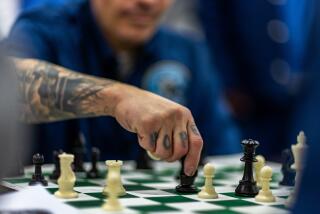After surviving COVID-19, formerly incarcerated people tackle trauma through dance
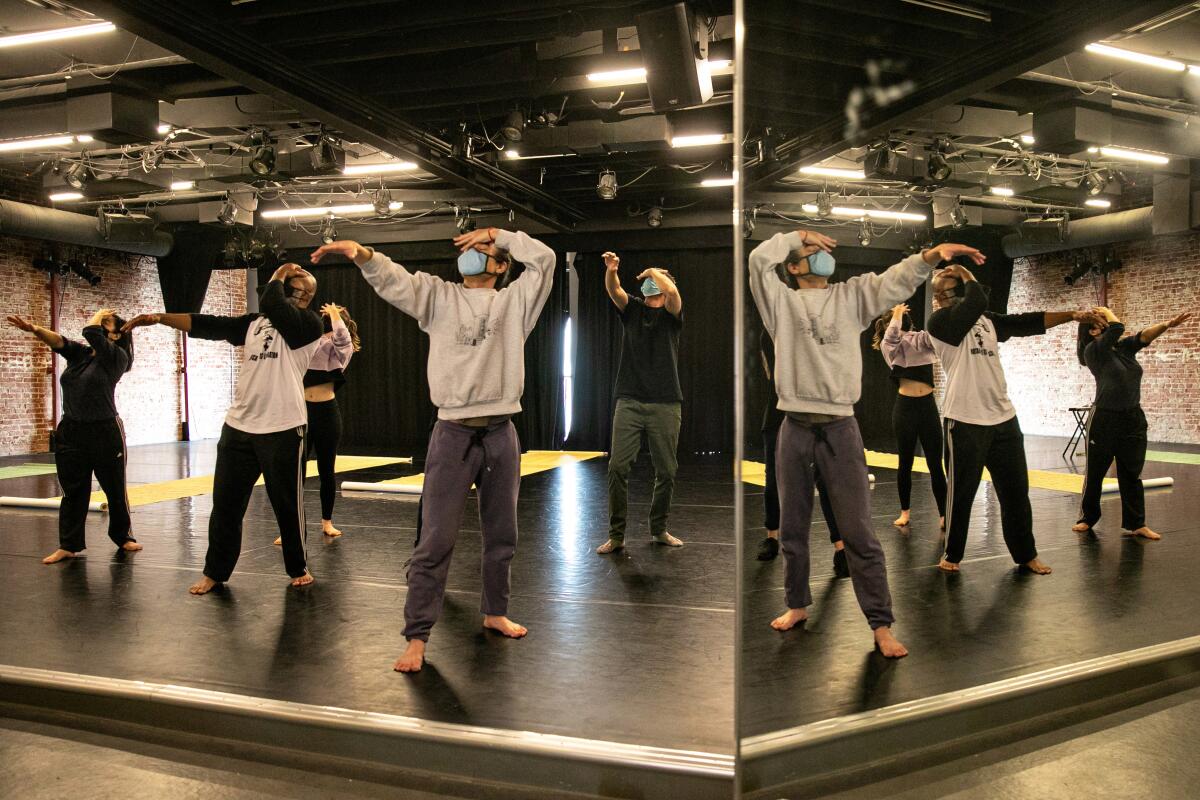
- Share via
As of today, there are more than 91,000 total confirmed cases of COVID-19 in California prisons and 260 people have died from the virus, according to the California Department of Corrections and Rehabilitation.
Suchi Branfman pauses our conversation over Zoom, in early January, and notes that the number increased from 259 to 260 since she last checked the CDCR online tracker two days ago.
Branfman has been recording coronavirus statistics on a notepad since the start of the pandemic in 2020. She prioritized data from the California Rehabilitation Center in Norco, the prison where she taught dance workshops during a 10-year choreographic residency. During her tenure, she started a project called Dancing Through Prison Walls, which yielded the dance film “Undanced Dances Through Prison Walls During a Pandemic.” Although she didn’t know it at first Branfman, the data would become central to her next project with the collective.
Now, Dancing Through Prison Walls is bringing its new initiative, “Data or 7 Ways to Dance a Dance Through Prison Walls,” to the Odyssey Theatre in Sawtelle this Friday and Saturday. The show uses the data Branfman collected to show audiences how COVID-19 has affected those inside California prisons.
The poem “I Am You” by Forrest Reyes — someone who is still incarcerated at CRC — is central to the show, cementing the theme that the prison industrial complex affects all of us. Together, formerly incarcerated folks and dance artists share a harrowing and unifying story of the pandemic and the impact of COVID-19 on prisons.
“How do we create work that invites people into understanding that we’re not separate from folks who are incarcerated, that we are implicated in their incarceration?” Branfman asks.
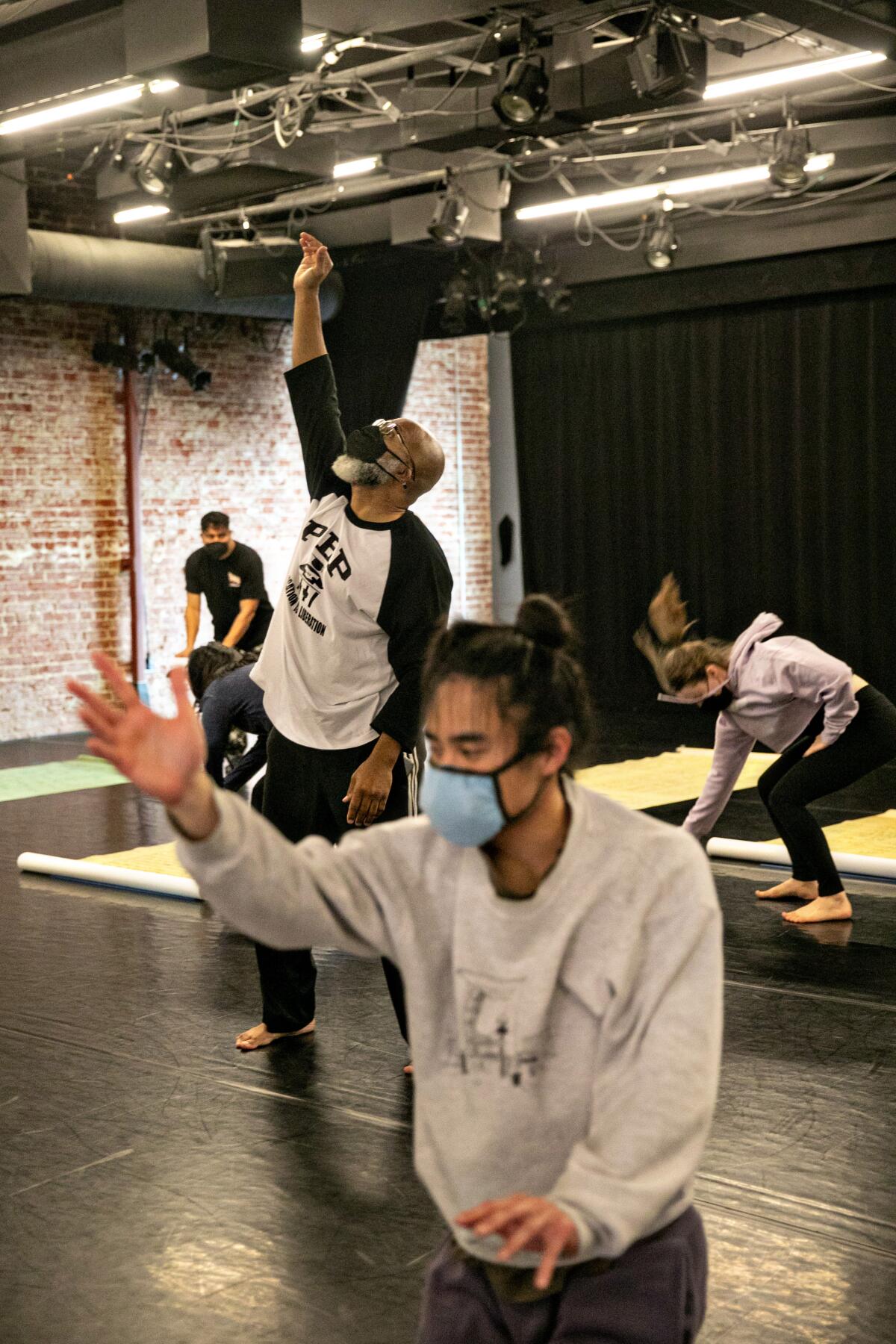
In “I Am You,” Reyes argues that people outside prison walls are complicit, writing, “You can’t see me because I am you.” The piece is recited by performers in “Data or 7 Ways to Dance a Dance Through Prison Walls.”
Long scrolls hang from the ceiling of the theater, unfurling onto the ground, toward the audience until those watching are confronted visually and auditorily with the numbers of COVID-19 cases.
“Our hope is that this is a place for us to situate a conversation through dance,” Branfman says. “Get people activated in some way.”
The first iteration of the show commenced in June as part of the Grand Performances series and the City of Los Angeles Individual Master Artist Project. The audience was pivotal to the piece, helping unroll the scrolls and even participating in a dance with the performers. The same will be true for the current performances with Dance at the Odyssey.
The show developed out of workshops Branfman taught at the Norco prison. At the beginning of the pandemic, she primarily communicated with incarcerated folks in her workshop via prompts on paper that would be sent to members inside. They’d respond with drawings and writings that would communicate ideas for choreography. These written pieces became the template for “Undanced Dances Through Prison Walls During a Pandemic.” After the dance film came to fruition and COVID-19 restrictions eased in February, she continued to have incarcerated folks write dances, even when they were working together in person.
“We’ve held this idea of writing dances because we never know if we’re going to be cut off, cut short or not go at all,” she says.
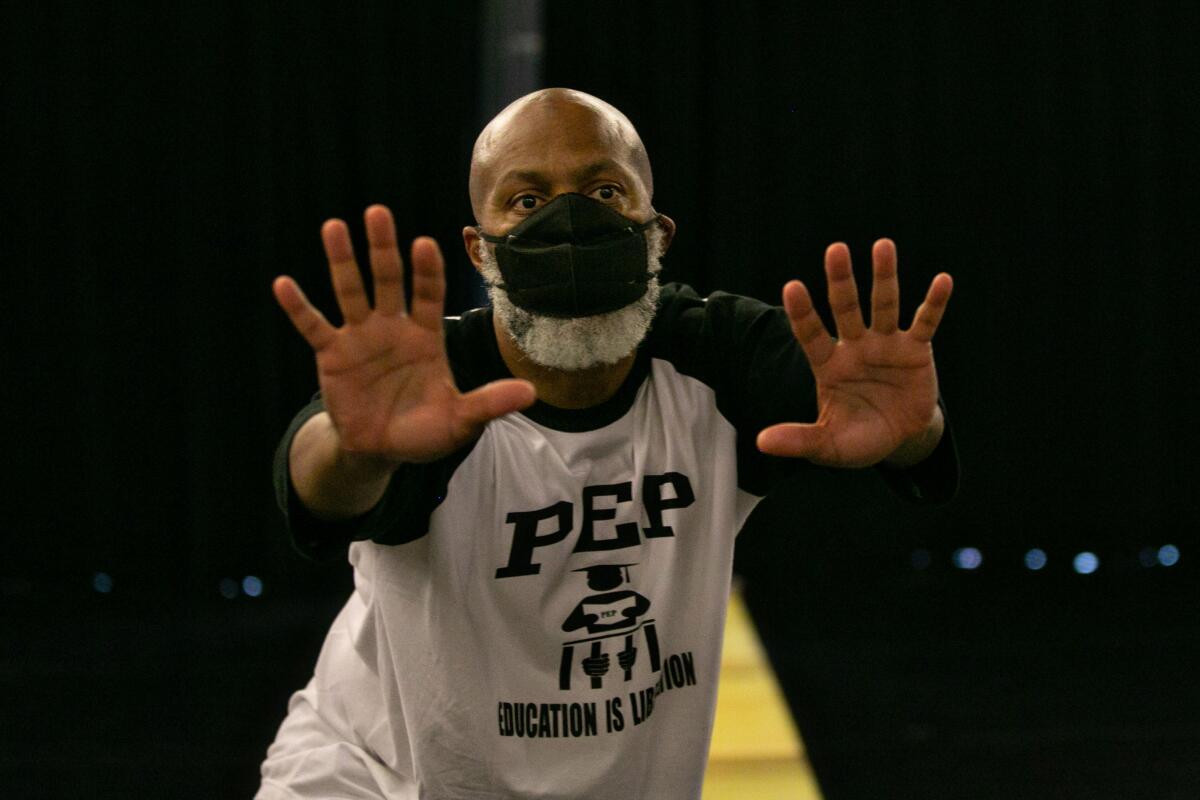
Paper became a backbone for the project, and therefore a large part of the soundscore for “Data.” As dancers move throughout the piece, the sound of crushing paper and whispered numbers of COVID-19 cases in California prisons fills the space.
When cases rose, she couldn’t reconnect with everyone inside the gymnasium of the prison where she held workshops. For those taking part in the project, the gymnasium was a “super intimate space,” Branfman says.
A formerly incarcerated participant in the program who requested anonymity to avoid risking his parole and safety says he grew up dancing cumbia and wondered whether he’d be dancing the Latin style or hip-hop when he signed up for the workshop.
“When I got there and experienced it, I saw how dance is used as an art form,” he says.
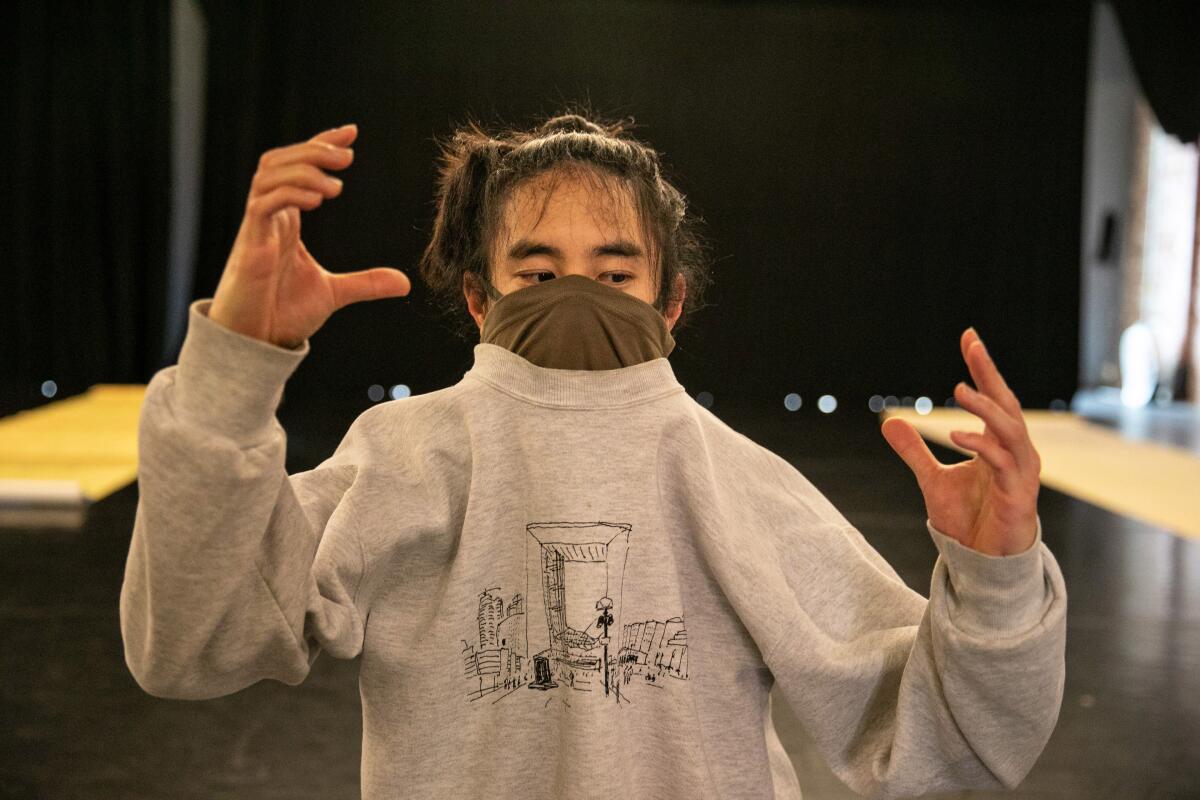
The source says most workshops offered by the Norco prison had a strong student-teacher dynamic, but Branfman broke down the expectation and allowed them to collaborate with each other.
“It was the highlight of my week, every Monday,” he says.
He learned how dance could be used as a form of expression. “I had this mask, where you’re very disciplined, you’re very quiet, but when I was in that class, I was once again a child,” he says. “I was able to have fun, I was able to let go and break down those barriers.”
The COVID conditions behind the dance
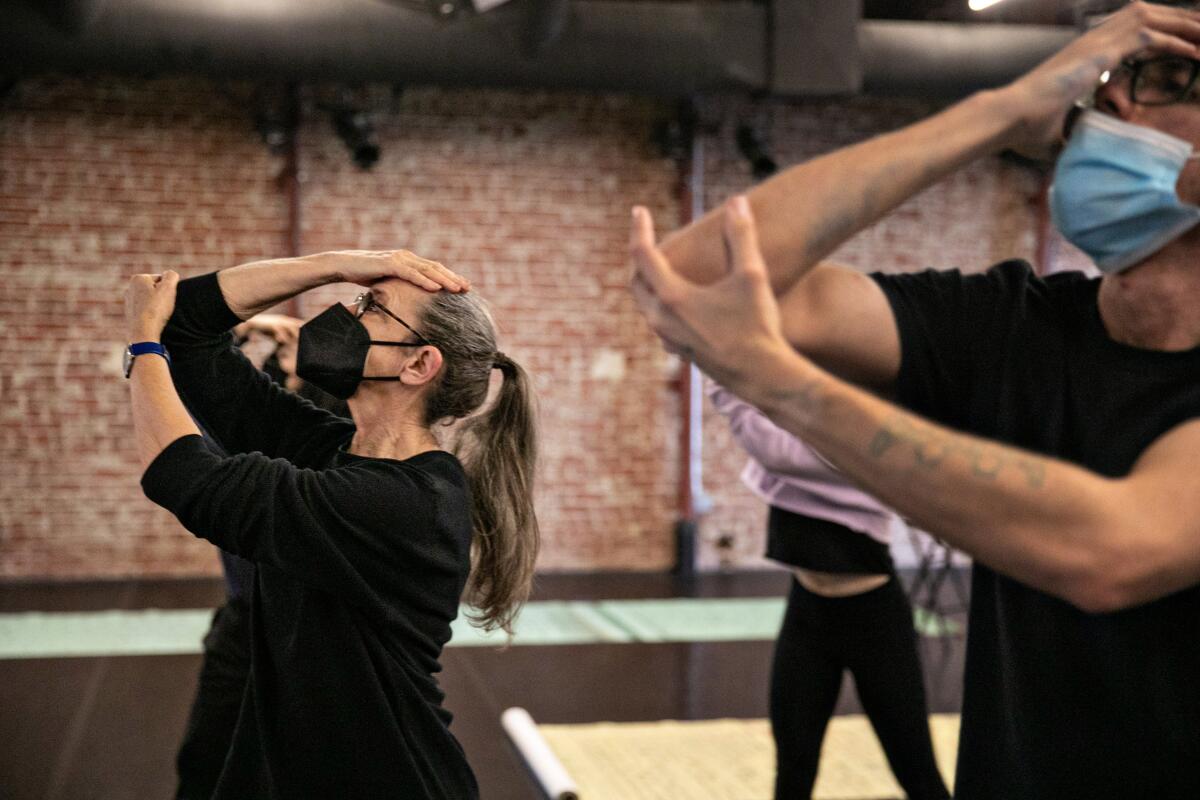
The source learned about COVID-19 from the news while he was incarcerated at Pleasant Valley State Prison in Coalinga. He didn’t think it would affect them inside, but it soon “spread like wildfire.”
“Initially their reaction was just to lock us down,” he says. They had limited time in the yard, fewer opportunities to shower and smaller portions of food.
When someone contracted COVID-19, correction officers would laugh about it, the source says. They didn’t take it seriously. He lived in a 6-by-9-foot cell, and when his cellmate contracted the virus, he was unable to move to a different room. He could only hope that he wouldn’t test positive.
“They didn’t care about us,” he says.
The source says incarcerated people were punished when they asked for help. While in PVSP, he contracted Valley fever. And when he moved to the Norco prison, his cough grew worse. He sought help, but he says the nurse didn’t believe that he didn’t have COVID-19, even when he tested negative multiple times.
Woods Ervin, the national media and communications director of Critical Resistance — an advocacy organization dedicated to prison abolition — says Dancing Through Prison Walls’ new show highlights the issues they’ve been addressing with regard to prisons and COVID-19.
Over the course of the pandemic, California prisons have attempted to address outbreaks by releasing thousands of incarcerated folks with 180 days or less remaining on their sentences. Ervin says while it was great to see people released, it didn’t address the root cause: non-testing correction officers.
“I know that there was some rhetorical pushback during the spikes of COVID inside around the fact that releasing people and closing down prisons was going to bring COVID from inside into the general population, but COVID had to be brought in from the outside,” Ervin says.
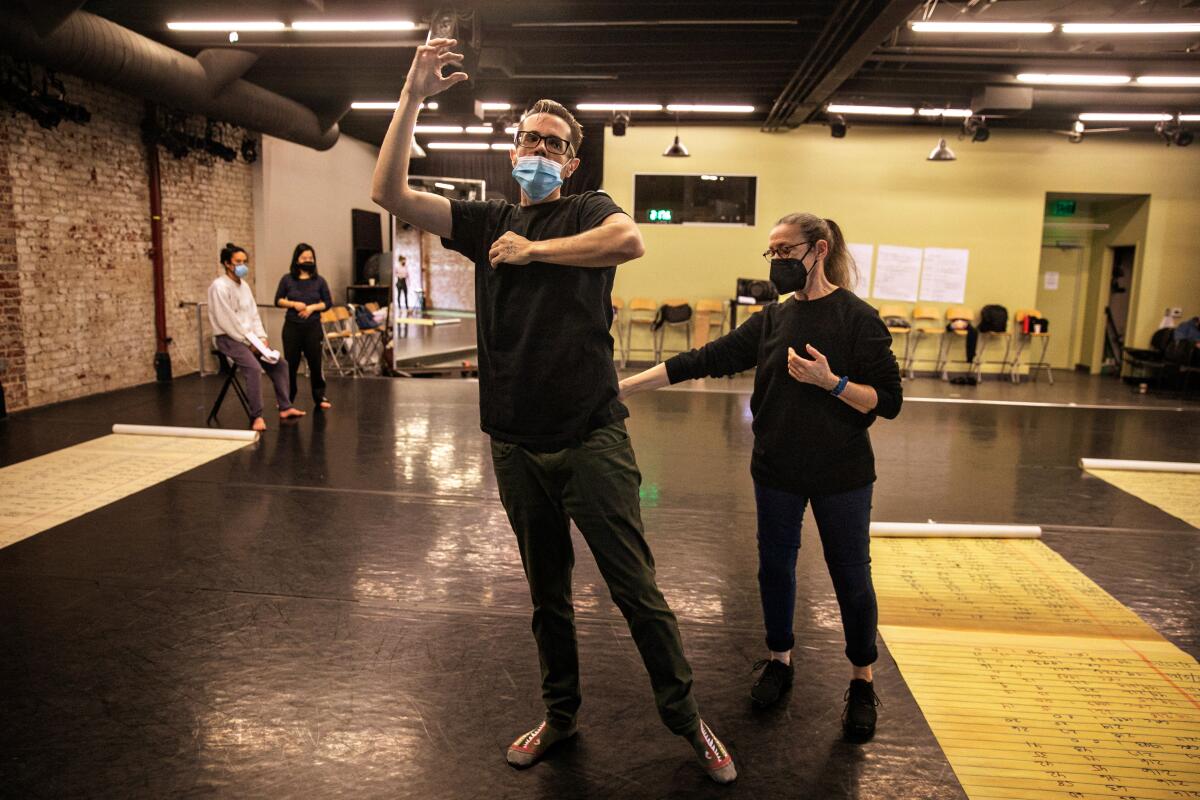
Mokhtar Ferbrache, one of the participants in Branfman’s class and someone who was formerly incarcerated at CRC, says the negative impacts of COVID-19 were exacerbated by prison confinement. He says they’d be tested once a week, and when someone in the room was positive, testing would be amped up to twice a week. He was in a dorm setting with about 100 people.
“The whole time you’re sitting in there and you’re watching it move in the space,” Ferbrache says. “It’s really weird, like a wave. You could see it moving and you’d see, ‘Oh, this person got it.’ And then you watch the people that were around him.”
He waited for it to catch up to him. When it did, he felt a sense of relief. Those who tested positive, like Ferbrache, were taken to isolation with others who also had COVID-19. Before testing positive, he had no idea how the virus impacted someone. That changed when he entered isolation and saw how difficult the symptoms could be. Soon, the arrival of an ambulance became a daunting sign of potential death.
Working on “Data,” he was able to process and fully understand how traumatic COVID-19 had been. As Branfman unfurled the scrolls in rehearsal, Ferbrache saw the date he tested positive: Dec. 25.
“It’s me,” he recalls saying. Suddenly, a face was put to the numbers Branfman had been collecting.
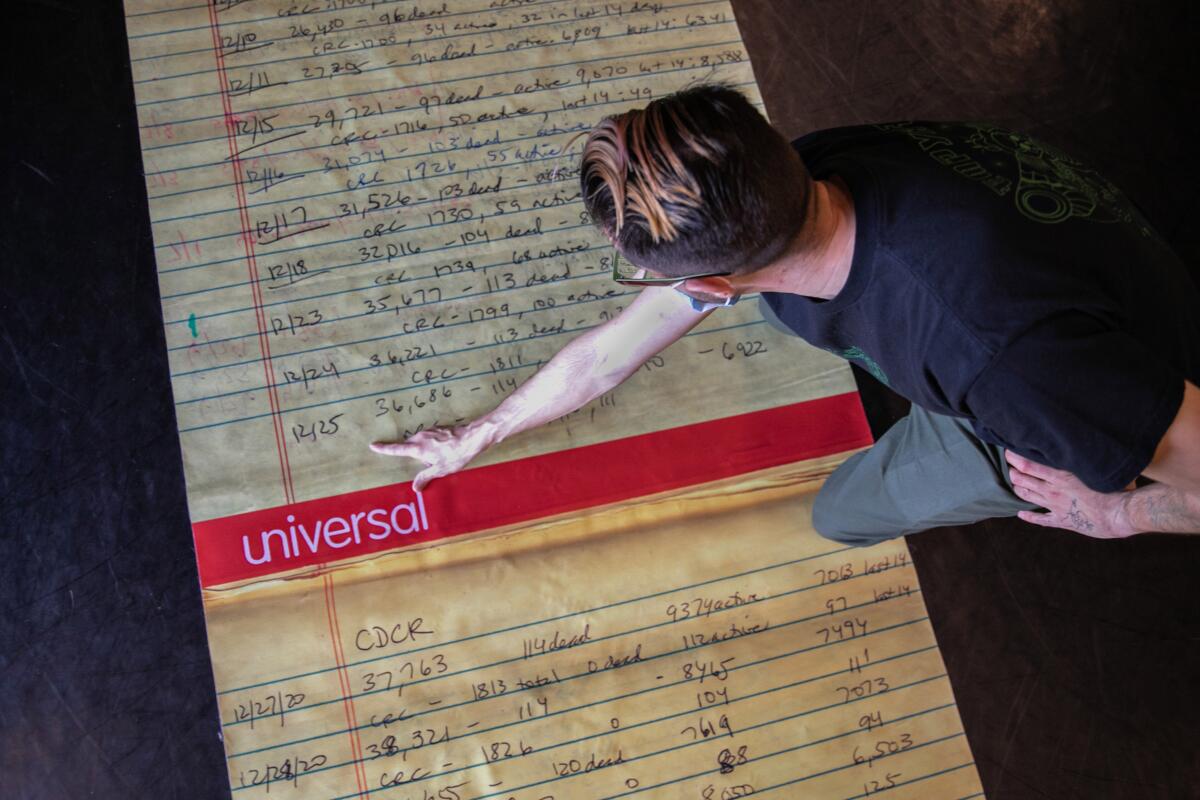
“It’s just writing on a piece of paper, but then to have it elicit such a response is so interesting to me,” he says of the audience reaction to seeing the numbers grow.
Before rehearsal at Arc studio in Pasadena on Feb. 5, Branfman gathered the cast in a circle and started moving freely.
“To be able to turn on music and be in a circle, and start jamming and dancing together is probably one of the most beautiful warm-ups that I’ve done over the years,” Branfman says.
She says she lives by Saidiya Hartman’s writing about improvisation being a call to assembly. Her work in prison abolition advocates for dance inside prisons, creating a safe space for incarcerated folks and continuing conversation on the outside through performance.
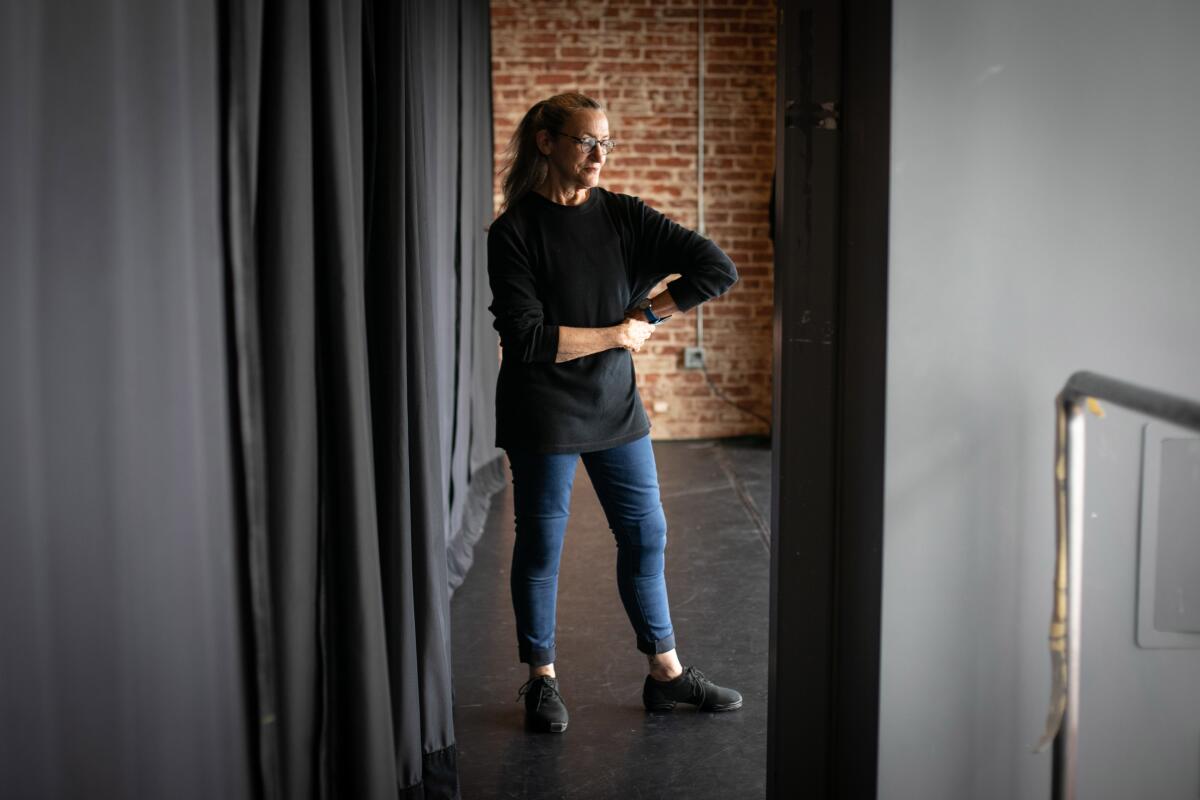
Throughout the rehearsal, the group focused on understanding the choreography of “hitting a wall.” As each person ran from one end of the stage to the next, they each had their own interpretation. As they started understanding one another’s approach, the feeling of the wall grew stronger. Combined with the sounds of crumbling paper, unrolling scrolls and whispered numbers, the wall was clear. The influence of COVID-19 was clear.
The source says in the end, he hopes audiences gain empathy for the faces behind the numbers.
“We’re human,” he says. “Yeah, we did wrong, but we’re paying for it. We’re human.”
More to Read
The biggest entertainment stories
Get our big stories about Hollywood, film, television, music, arts, culture and more right in your inbox as soon as they publish.
You may occasionally receive promotional content from the Los Angeles Times.


